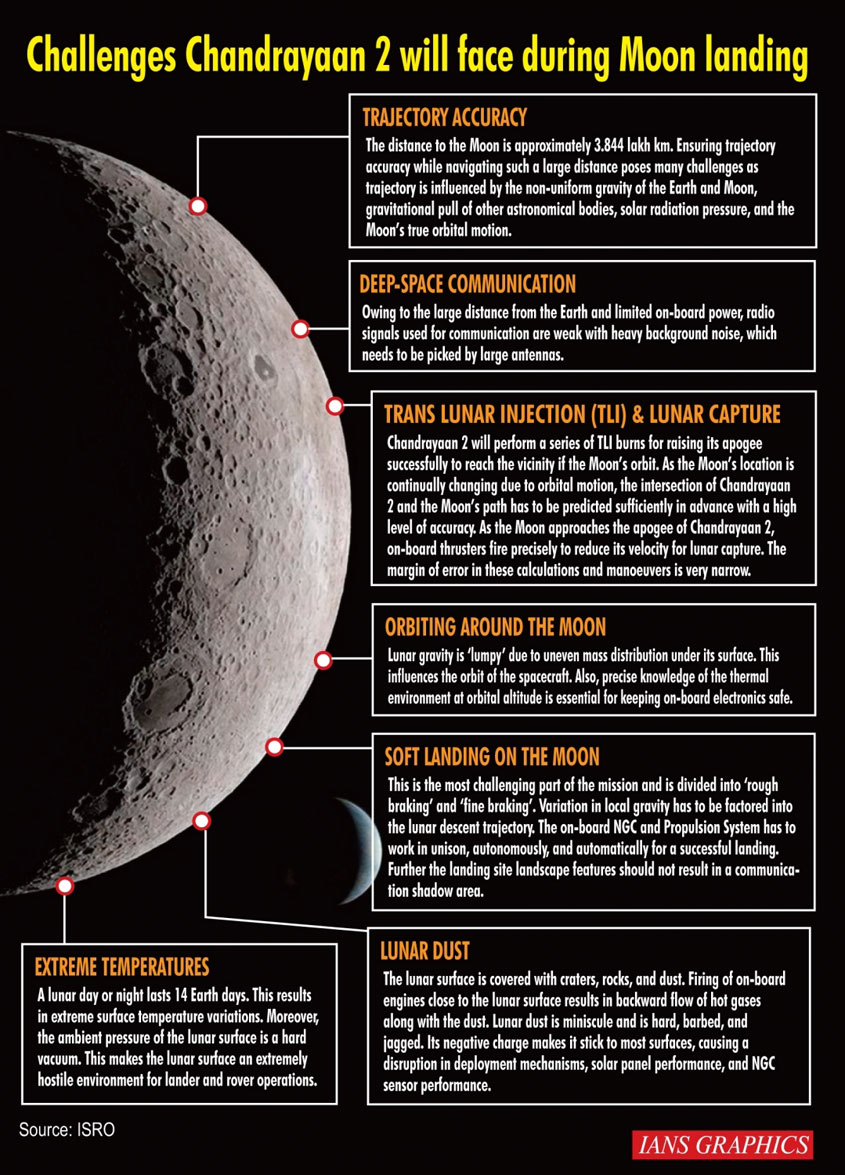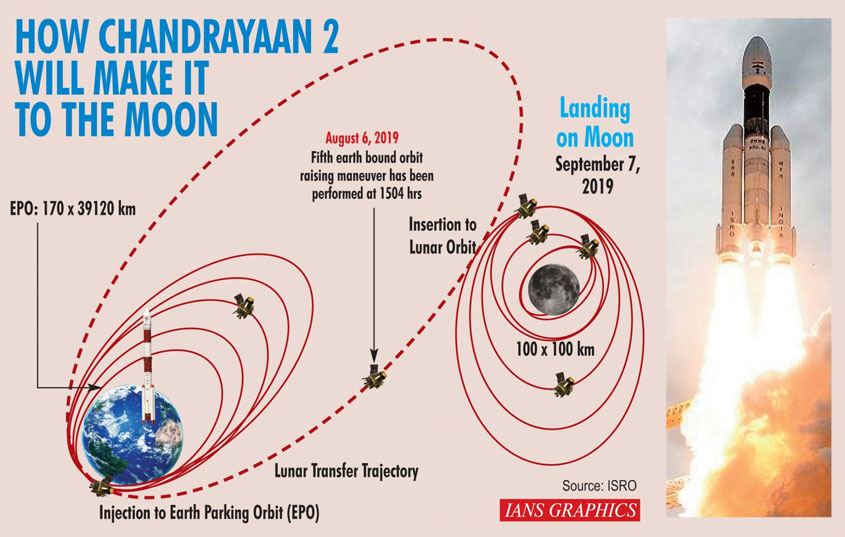Chandrayaan-2 Lander separates from Orbiter, Moon touchdown in five days

Mail This Article
Bengaluru: India's lunar craft Chandrayaan-2 separated from its onboard lander as planned at 1:15 pm (IST) on Monday.
The separation of lander, named 'Vikram', from Chandrayaan-2 orbiter was done as per the planned schedule. The lander, which has the lunar rover named 'Pragyan' housed inside it, is expected to touch down on the south polar region of the Moon on September 7 between 1.30 AM and 2.30 am.
A lander is a spacecraft that descends on the surface of an astronomical body.
A rover is a space exploration vehicle that would roll out from the lander. It will move across the surface of a planet and carry out various tests.
What next?
ISRO said that after the lander's separation on Monday, two deorbit manoeuvres are scheduled for September 3 (9:00-10:00) and September 4 (3:00-4:00) respectively, before the powered descend on September 7.
Following the landing, the rover 'Pragyan' will roll out from lander 'Vikram' between 5:30-6:30 am on September 7 and carry out experiments on the lunar surface for a period of one lunar day, which is equal to 14 earth days.
The mission life of the lander is also for one lunar day, while the orbiter will continue its mission for a year.
The orbiter carries eight scientific payloads for mapping the lunar surface and study the exosphere (outer atmosphere) of the Moon while the lander carries three scientific payloads to conduct surface and subsurface science experiments.
The rover carries two payloads to enhance the understanding of the lunar surface.
India's second lunar expedition would shed light on a completely unexplored section of the Moon, its South Polar region.
ISRO has said that the mission objective of Chandrayaan-2 is to develop and demonstrate the key technologies for end-to-end lunar mission capability, including soft-landing and roving on the lunar surface.
On the science front, the mission aims to further expand the knowledge about the Moon through a detailed study of its topography, mineralogy, surface chemical composition, thermo-physical characteristics and atmosphere, leading to a better understanding of the origin and evolution of the Moon, the space agency had said.
The health of the orbiter and the lander is being monitored from the Mission Operations Complex (MOX) at ISRO Telemetry, Tracking and Command Network (ISTRAC) in Bengaluru. All the systems of Chandrayaan-2 orbiter and lander are healthy, ISRO informed.
Our special feature on Chandrayaan-2 Trip to the Moon.
Lunar mission
India's Geosynchronous Satellite Launch Vehicle, GSLV MkIII-M1 had successfully launched the 3,840-kg Chandrayaan-2 spacecraft into the earth's orbit on July 22.
In a major milestone for India's second Moon mission, the Chandrayaan-2 spacecraft had successfully entered the lunar orbit on August 20 by performing the LOI manoeuver.
Chandrayaan-2 satellite began its journey towards the Moon, leaving the earth's orbit in the dark hours on August 14, after a crucial manoeuvre called Trans Lunar Insertion (TLI) carried out by the ISRO to place the spacecraft on "Lunar Transfer Trajectory".
The spacecraft's health is being continuously monitored from the Mission Operations Complex with support from Indian Deep Space Network antennas at Bylalu, near Bengaluru, the space agency has said.



